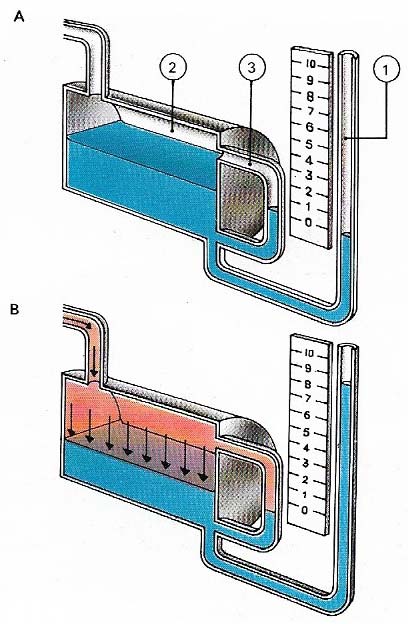manometer

The manometer is a U-shaped liquid column gauge used to measure differences in fluid pressure. The "well-type" has one column (1) of relatively small diameter whereas the second that is wider acts as a reservoir (2). The difference in columns ensures that the level in the reservoir does not change much with pressure, but that in the small diameter column does, so slaking for accuracy in reading these variations. Small positional adjustments of the scale with the help of the level indicator (3) compensate for the small reservoir changes. At first (A) both columns are at equal levels. With the reservoir pressurized (B) the new level shows pressure.
A manometer is a device for measuring pressure. It consists of a U-shaped tube containing a liquid, one end open to the atmosphere and the other end attached to the vessel whose pressure is to be measured. If the gas pressure in the vessel is greater than atmospheric, it will force the liquid down on the side nearest to the vessel and up on the side open to the atmosphere. The difference in heights of the liquid in the two arms of the tube shows the difference in pressure. Sensitivity is increased by inclining the tube or giving the legs different cross-sections.
In the well-type manometer, illustrated here, one column has a relatively small diameter while the second serves as a reservoir. The difference in cross-sectional area (sometimes as much as 1,500 times) ensures that while the level of the reservoir does not change appreciably with change of pressure, the level of the small diameter column does; this makes for adequate accuracy. Small adjustments to the position of the vertical scale, with the aid of the level indicator, compensate for the little reservoir change that does occur. Readings of differential pressure may then be made directly on the vertical scale. (A) Both columns are at atmospheric pressure, so the levels are the same. (B) The reservoir is pressurized. Its level is indicated so the scale may be adjusted to the new level.


